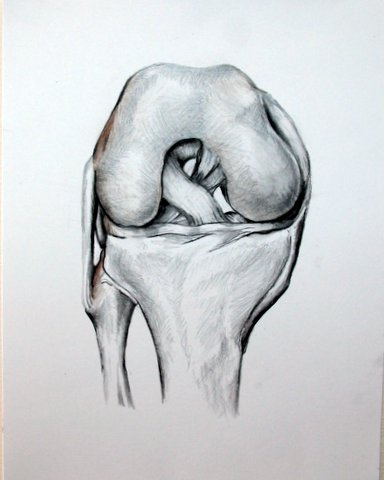Your knee has 2 menisci. The meniscus is a crescent shaped specialized cartilage that helps cushion the knee and distribute to forces of walking, running, etc. It also acts as a bumper and can help prevent abnormal motion in the knee especially if your ligaments are loose or injured. There are two general types of meniscus injuries, acute tears that are often the result of trauma or a sports injury and chronic or wear and tear type years. Acute tears have many different shapes (vertical, horizontal, radial, oblique,
complex) and sizes. They are often treated with surgical repair as they rarely heal on their own. Chronic tears are treated symptomatically. Physical therapy with or without the addition of injections and anti inflammatory medications for chronic tears. If the tear causes continued pain, swelling, or knee dysfunction, then the tear can be removed or repaired surgically.
Non-Surgical Treatment
Non-surgical treatment is often considered first for a smaller or chronic tear that does not appear amenable to surgical repair. Non-surgical treatment consists of activity modification, physical therapy for strengthening and range of motion, weight loss, and possibly injections or medications. Dr Petre will guide your non-surgical treatment. Non-surgical treatment is often used as a first line treatment, you may still need surgery if it fails to work or your condition worsens.
Surgical Treatment
Surgery consists of either removing the damaged tissue or repairing it. Dr. Petre believes the meniscus serves a purpose and therefore will attempt to repair when possible. The type of tear, location an the patients age are all determinants of the possibility or repair versus removal. The meniscus has poor blood supply and therefore healing can be difficult. If there is no chance of healing then it is best to remove the damaged and non-functional meniscus.
Recovery and Rehabilitation
The recovery and then is very different between repair and removal. If your meniscus is repaired you will need to be on crutches for 6 weeks with only limited weight-bearing. You will need a brace and have limited knee motion. You will be restricted at work/sports for a minimum of three months.
If your meniscus is partially removed, you can start walking most immediately with crutches for only a few days. You can be back to many activities in a few weeks.
Surgery FAQs
- How long does surgery take? meniscus repair surgery can take 1-3 hours. Meniscus partial removal takes 1 hour
- What kind of anesthesia will I need? a light general anesthesia with a nerve block is most common.
- How long will I be in the hospital? Many patients can leave that same day, occasionally Dr. Petre will have you stay one night in the hospital
- Is surgery safe? All surgery has risks; however, this surgery when compared to all other surgery is very safe.
- Will I need physical therapy? Yes. Physical therapy is crucial to an excellent outcome.
- How long before I can return to work/school? For jobs and academics that require minimal physical exertion and can be done with crutches, many people can return in a few days to 2 weeks. For jobs that require heavy lifting or exertion, it is safe to plan 4 weeks off.
- How long before I can return to my sports? For meniscal repairs, it will be 4 months before you return to sports. For meniscus partial removal, you can be back to light activity in two weeks and full activity in 6 weeks.
- How long before i can drive a car? All patients must be off pain medicine before driving. Many patients can return to driving in 2 weeks or less once they feel completely safe operating a vehicle.
- How long will I be on crutches? For meniscus repairs, you will be on crutches for 6 weeks. For meniscus partial removals, 1-7 days.
- How long will I need pain medicine? Most patients need 3-5 days of pain medicine and sometimes up to 2 weeks. If you are still having pain requiring narcotic pain medicine after a month, Dr. Petre may ask you to see a pain specialist.
- How long will I need a brace or sling? For meniscal repairs you will need a brace for 6 weeks. For partial meniscus removals, a brace is not necessary.

